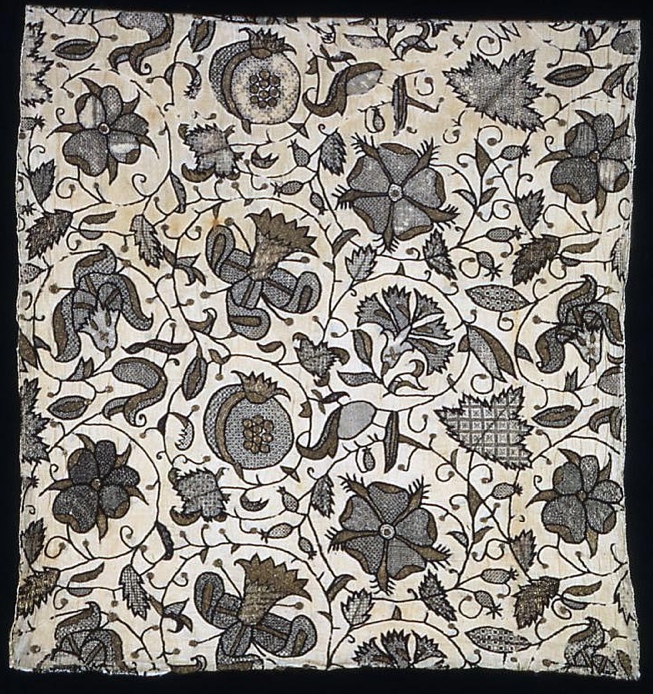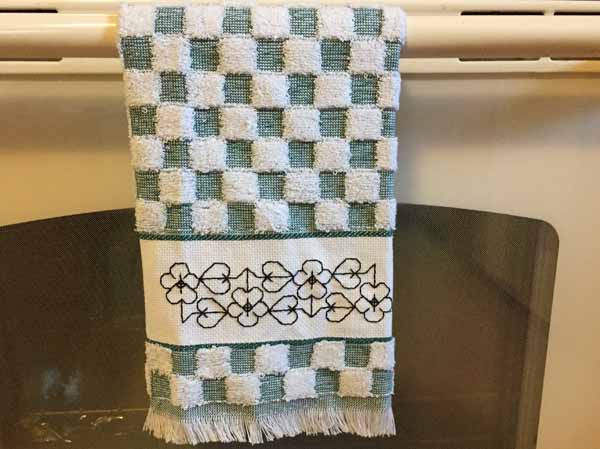Blackwork
Blackwork is a form of embroidery that is sometimes known as Spanish Blackwork and most often uses black thread.
Today, it is usually counted-thread embroidery stitched on even-weave fabric made specifically for counted stitch work. However, traditionally it was done on white or off-white linen or cotton fabric using black silk thread.
Sometimes colored threads or metallic threads are used to accent the stitches. There are several common stitches used in Blackwork, including the double running stitch, backstitch, buttonhole, chain, overcast and sometimes stem stitch.
Another useful stitch for blackwork is our tutorial for cross stitch backstitch, follow the link.
History of Blackwork
Blackwork embroidery is often thought to have been brought to England from Spain when Catherine of Aragon arrived in England to marry King Henry VIII. This is where the name “Spanish Blackwork” originated, and it held this name for about 50 years.
Only the upper class citizens were allowed to wear clothing decorated with Spanish Blackwork; In 1553 an Act of Parliament made it a crime for anyone under the level of knight to wear such clothing. 1553 also happens to be the year Catherine and Henry divorced; at that time the name "Spanish Blackwork" was changed to "Blackwork".![Elizabeth I wearing free-stitched blackwork sleeves, stomacher, and collar (beneath a sheer linen ruff), c.1590.[6]](../articleimages/Elizabeth_I_Jesus_College_Oxford_1590.jpg)
The garments were most often simple chemises, smocks or shirts, but the use of black silk thread, sometimes embellished with gold, made them elegant.
As a side note, the use of black silk thread reinforced and neatly covered soiled cuffs and hems!
Another theory is that Blackwork actually originated in Morocco, North Africa. Research suggests that the Moors in Northern Africa decorated their clothing hems with colored threads in geometric designs, most often blue or tan on linen, centuries before it became known as Spanish Blackwork.
This group may have moved into Spain in the 8th century, bringing this style of embroidery with them.
The earliest Blackwork was made using counted stitches to create geometric patterns. You will see most of the current Blackwork is done in this style, especially in new patterns produced for crafty stitchers.
Later, Blackwork showed flowers in large outlined patterns that were filled in with geometric designs. Another style of Blackwork has the outlined patterns shadowed with random seed stitches looking very much like etchings.
It is very rare to find well-preserved original Blackwork done in England. The iron-based dye that was used there breaks down thread, and sadly, there are no current techniques to conserve any discovered English Blackwork.
Blackwork that was done in old-world Spain is better preserved since less iron was used to color the silk threads that were used there.
Want some free blackwork projects? We have those too!
Look below for some great links that will help you find books, patterns, and images of Blackwork. Check it out!

Supporting Products and links: Some of the links below may be affiliate links.
We make a small commission on sales through the affiliate links, at no extra cost to you. Thank you in advance
for your purchase and your support! Please see our full Affiliate
Statement for more information.